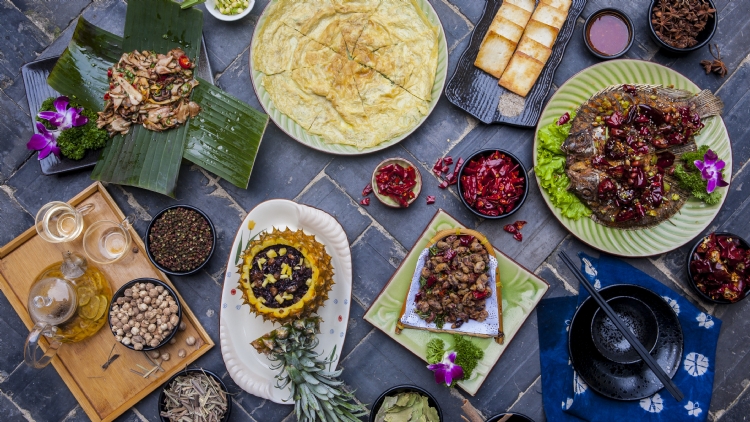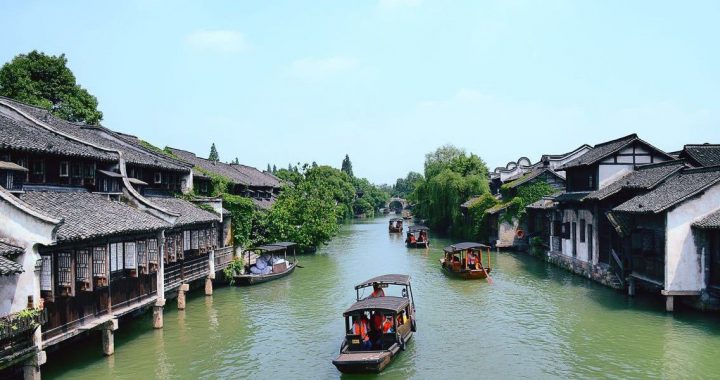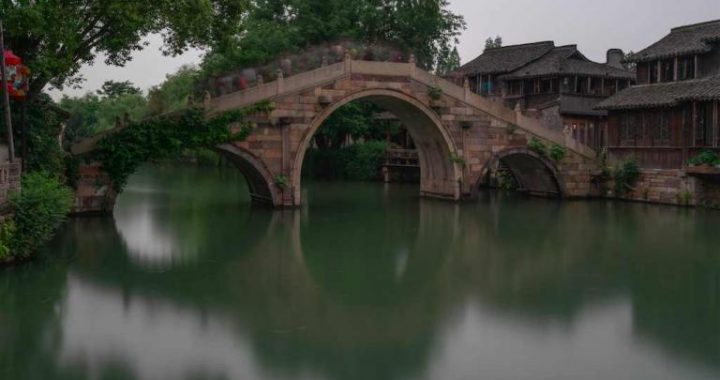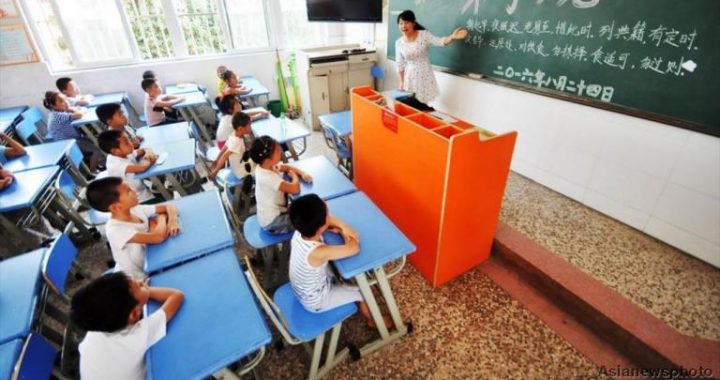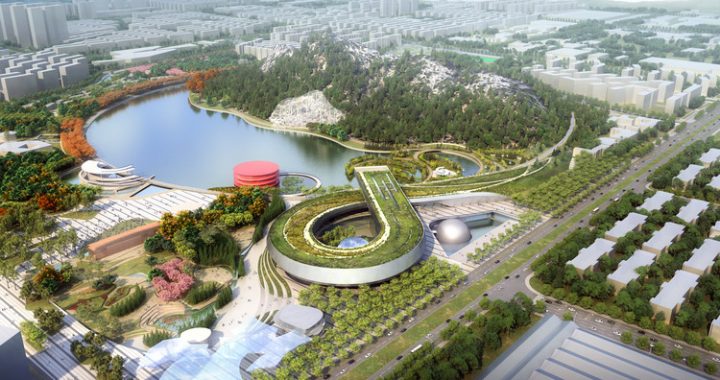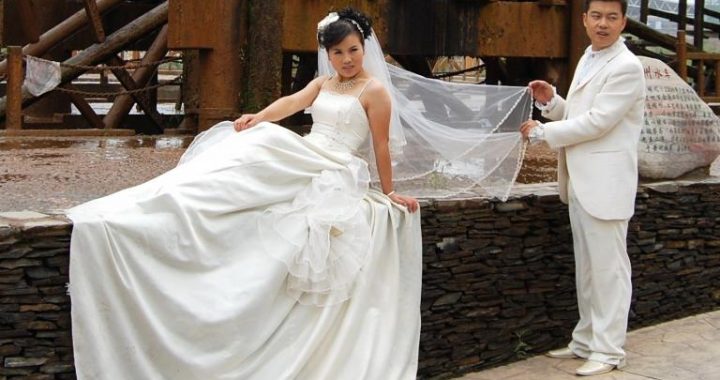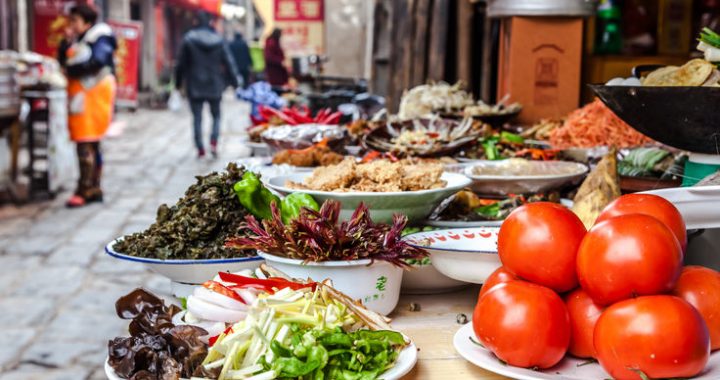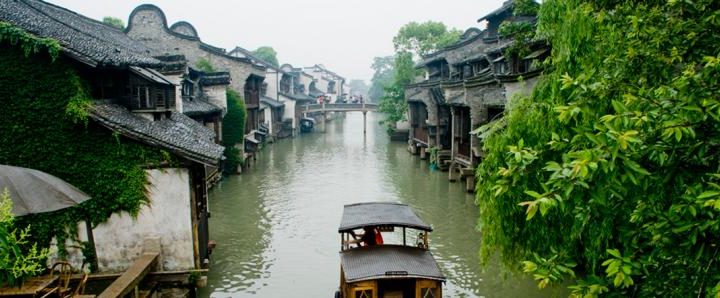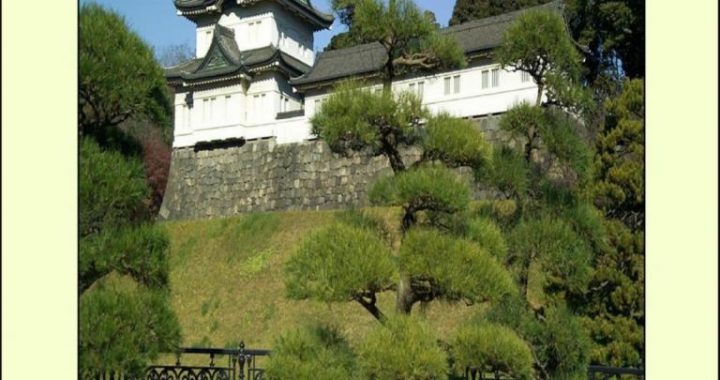A Land of Fish and Rice, Silk and Tea
26 min readThe phrase Land of Rice and Fish’, used to describe north Zhejiang province and Wuzhen, could just as well have been written as the ‘ Land of Tea and Silk’. Wuzhen is the home of each of these eastern wonders which in the case of silk, together with porcelain, enthralled the West for so long. Chinas national museum for tea is in Hangzhou. So too is its national museum for silk.
The extent of nature’s gifts to Wuzhen and other parts of Zhejiang province must seem a trifle unfair to outsiders.
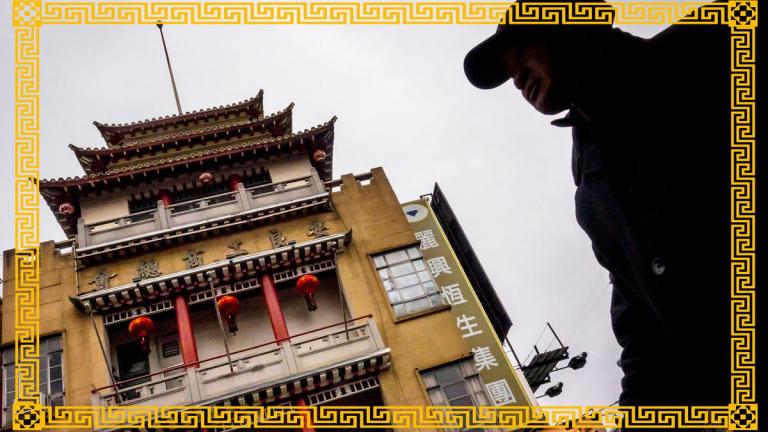
Xiaolu Guo is a young writer who was born in Zhejiang. In her book Once Upon a Time in the East (2017) she writes of her struggle to escape the confines of gender, poverty and excessive state interference in China. She travelled to England and remains there. Certainly the land of “Chips and Fish’, as she writes, proves not to be superior in all respects to the place of ‘ Rice and Fish’ she has left behind. She did not care for English food. Few Chinese guests do. Naturally there were other criticisms beside those of food, even if she has now made England her home.
Typical of her nationality, Xiaolu Guo uses a number of food analogies. She writes that the Communists were correct to believe the West was not entirely a place of Milk and Honey’. Of course amongst the 300 million migrant workers without the bukou registration, which secures social rights in the cities, there must be many in China for whom life is very tough. Generally, however, the faces of those seen cleaning streets or hotel rooms in China, working as street vendors or walking down a pavement display neither stress nor discontent.
Indeed the facial expressions of those passed on the typical Chinese street are rather good-humoured. In contrast there is stress etched deeply into the faces of many in the working-class towns near Cambridge, such as Haverhill and Harlow. It generally exceeds that observed in China. Xiaolu had alighted on a truth. Neither society is yet able to offer Milk and Honey to all.
The Chinese female writer found solace in the English pubs because the heavy scent of steam, stale air, human sweat and scorched protein’ reminded her of home. These fragrances were those of the silk business in her home province of Zhejiang. The cocoon of silk is boiled above an open furnace to kill the worm before the silk thread is unwound. This fascinating process is shown to the visitor within a re-created silk production factory in the twenty-first-century Wuzhen. The aroma of scorched protein was familiar to Wuzhen silk workers. In hard times the protein-heavy worm would have been eagerly consumed. Indeed in far less hard modern times, live ‘ creepy-crawly beasties’ full of vigourous life are still on display to restaurant customers in southern China and happily devoured.
In this reference to silk production Xiaolu Guo peels away the romance of silk. Silk has long adorned the prettiest women, been dyed and woven into fantastic patterns, epitomised luxury and possessed a sensuousness which was the envy of all who could caress its folds. It has even shared its name to a road which symbolises East-West trading. However, silk production itself was far from being a romantic business. Raising and harvesting the silk cocoon provided a living to Wuzhen farmers but it was a tough one, far removed from those who would ultimately wear the silk they made.
The Chinese monopoly of silk production, sericulture, endured for centuries. Strips of silk found in Zhejiang have been dated back almost 3000 years. Confucius himself gave oxygen to the myth of the origins of this lustrous luxurious. He told the story about Empress Leizu in the 27th century BC. Sheaccidentally unwound the silk thread of a cocoon after it had been droppedin a teacup. She became the Goddess of Silk. There are tales of skulduggery, similar to those surrounding porcelain, of how the secrets of silk escaped China.
In some manner the secret slipped out to Arabia and from there further West during the Christian Crusades in the eleventh century. Through the Tang and Song dynasties, from 600 to 1200, the Chinese kept their monopoly of the silk trade secure. Subsequently Italy, Spain and France developed modest-sized silk industries successfully. The English proved less adept.
One centre for silk manufacture in England was set to be Cambridge during the early sixteenth century. Cambridge University shares much with China and its universities, but silk production provides no such happy connection. Three of its sixteen oldest colleges planted the mulberry treesneeded to nurse the worm in 1615; they invested considerably in the project at the behest of King James I. The project failed for a number of reasons. First the wrong specie of mulberry was planted -the morus nigra instead of the alba. Then the country, and Europe, endured a mini-ice age in the 1600s which doubtlessly left the larvae struggling for life. Furthermore, the victorious English rebels of the day, the Roundheads, eschewed most materials other than black cloth so demand for fancy dyed silk was much reduced. Doubtless the requisite sericultural skills were also wanting. In the late 1600s, the English diarist JohnEvelyn chose to explain the failure as being due to sloth and want of industry’, as if even then the work ethic of the Chinese exceeded that of the English.
Some of the original trees survive in Cambridge. Each of them, crooked, snarled and supported by timber pillars, still produces juicy red berries. The mulberry tree at Christ’s College provided shade for the young poet John Milton when he was a scholar at Cambridge in the 1620s. Milton, perhaps while in the shade of his college mulberry tree, wrote in Samson Agonistes of tears ‘ wettingthe borders of her silken veil. Shakespeare a little earlier in Otbelo wrote of the thread of the worm… that did breed the silk and England’s senior lawyers when promoted are still said to take silk’, referring to the silk gown they maythen wear as badge of office. Its imagery entered the English language: someone, or thing, might be described as being as ‘ smooth as silk’, and a child learns that a silk purse could not be made from a sow’s ear’.A Silk Stocking District denoted an area of wealth and of course the Silk Road itself entered the lexicon, if only since the late 1800s. Although it could be spun in places like Spitalfields, London, largely using immigrant French labour, it could rarely be grown there.
Virtually the last gasp of the English silkworm was heard after Princess Dianas wedding in 1981. Her veil was made in English silk from Surrey. The silkworm has always thrived best in the locality of Wuzhen and will always struggle in Cambridge. Nonetheless, its impact on distant cultures is astonishing.
The silk from around the area of Zhejiang in China has spun a web aroundmany of the world’s cultures, as well as indeed its own. Marco Polo in the late 1200s referred to the residents of Wuzhen and Hangzhou being clothed in silken garments even on ordinary days’. Silk was widely traded even if its secrets were not. Romans, Arabs, Western Europeans all valued this shimmering material which was the ultimate symbol of luxury since ancient times.
Despatched down the Silk Roads, be they ‘ roads’ across water from Shanghai or along routes to the West by land, it returned great wealth to China. It was usedinside the country as currency, became the principal diplomatic gift to Chinese neighbours and in the form of bolts of silk, typically rolls measuring 22 inches by 41 feet, was used to fund those responsible for paying soldiers. Until the practice was outlawed during the Tang period, bolts of silk served as collateral for China’s paper currency. Silk was light, highly durable and valuable.
Wuzhen and other local towns like Puyuan, Wangjiangjing, Xiashi, and even Hangzhou became known as silk towns. The waterways of the Yangtze River plain extended in every direction, making distribution simple. The British requirement from the mid-1800s that Shanghai be’a treaty port’ ensured that demand for silk produced further up the Yangtze River valley in Wuzhen boomed. Its production was certainly at the heart of Wuzhen culture. Like Xiaolu Guo, the writer Mao Dun refers to the great business difficulties Mr Linfaced during the 1930s in The Shop of the Lin Family. No one is buying Mr Lin’s goods despite the big discounts offered. He has Mr Lin express the wish that the peasants will spend with Buddhais blessing, money earnt from their spring raw silk sales’ in his shop. The severity of hardship is measured through reference to silk in Mao Dun’s work. He writes of the village elder Old Tong Bao, who by the time of the Japanese brutalities had seen many periods of strife but ‘ never yet a time when shiny green mulberry leaves had been allowed to wither on the branches and became fodder for sheep’. Hard times were measured through references to silk production. Silk, the worm, its cocoon and the mulberry tree were at the heart of Wuzhen’s culture.
While the peasants on the hills of Zhejiang province would have farmed yams and tea, those in the wetlands around Wuzhen farmed silk. The richer amongst those peasants tended small mulberry orchards, the less rich nurseda few trees planted on the narrow causeways between their rice paddies. The trees were coppiced to keep them small and their leaves accessible. The collected leaves were offered as food to the silk worms kept in sheds. It was not simple work, doubtless as those university workers in 1615 at Cambridge discovered.
Diseases, pests, imperfect temperatures threatened constantly and in addition, aconstant supply of the best leaves had to be found. These light-coloured worms also needed protection from vermin while they fed on the leaves.
The protection role was generally assigned to a cat. It was established enough for the phrase can mao, meaning a silkworm cat, to be invented. The words Can Mao Tu, together with the image of a cat doubles as a’ Keep Out’
sign in places such as wuzhen where silk is harvested. Cats are sometimes also thought to bring bad luck and even despised as being lazy, but they kept the Wuzhen mice from eating the valuable, defenceless, silkworms. The silkwormitself has been a symbol of unselfish, uncompromising hard work. The worm never stops working until it dies, as a candle never stops lighting the world until it is exhausted. Both candles and silkworms are used as symbols of hard work onthe greeting cards given by Chinese children to their teachers on the National Teachers’ Day every September. In the West a candle symbolises to a Christian only the illumination of the Holy Truth in a life which otherwise can be dark.
In England, National Teachers’ Day is not even marked.
Indicative of the benign conditions and climate in Wuzhen there were two or occasionally three silk harvests, one in spring, another in summer and sometimes a third following in the autumn. It is the spring silk worm about which writers tell their tales. Before man learnt how to manipulate the silkworm, there was just the one spring cocoon harvest. Thus it was that the scribes of Wuzhen wrote books entitled Spring Silkworms. Unlike with rice, where qualitydoes vary between the two harvests, the quality between the silk harvests is thought to be similar. The mulberry leaves are naturally fresher in spring and more plentiful so the chance of healthier, more numerous and better fed worms is greater. This usually leads to a bigger harvest at springtime. Interestingly in the West the mulberry tree is almost the last tree to come into leaf. It produces its leaves at the very end of spring, hence the Latin nomenclature, Morus, meaning late. Its leaves in Cambridge would not have been ready for the manufacture of springtime silk. The mulberry in China must grow to a different rhythm; Wuzhen lies 30 degrees north, Cambridge 52 degrees north.
Mao Dun wrote about the traditions and myths the local peasants attached to their worms. Silkworms needed cosseting. Loud noises, smoke or visitors could shock and distract the worms from their leaf munching. Their raw silk might have been taken to the Yi Da Si Hao silk producing company established in Wuzhen during 1875. The paltry payments for raw silk from this sort ofcompany were precisely those which Mr Lin in Mao Dun’s novel nonetheless hoped would stimulate trade at his shop. Removing the silk threads from this miracle of nature through boiling and then separating them with clunking machinery was the next stage in the creation of this stunning material. The demonstration of the silk manufacturing process has been kept alive in the Yi Da workshop, one of Wuzhen’s museums. It is fascinating for those unfamiliar with the techniques of silk production to observe the cocoons heated in water, the dead pupa removed and the silk thread unwound on simple wooden machinery driven by a foot pedal. The length of just one single cocoon’s thread can exceed 1.6 kilometres. Some of the machinery for unravelling the silk retained in this ‘ demonstration factory’ is from the late Qing, other machines are from the 1960s.
After dying the silk threads, the weave in twenty-first-century Wuzhen is completed on a 100-year-old machine. It is known as the Dabualuo and operates through 2,000 moving components. Superior female dexterity determines it is women who outplay men on this machine. One lady, its leader, perched with crossed legs high above the ground, pulls and pushes levers. Her second-in-command stands below, following instructions as to which threads of coloured silk should be consumed by the machine in order to complete thepattern. Modern silk-processing factories are large businesses which require significant investment. The contribution of the Wuzhen peasant who can pick leaves from his few trees planted on the causeway between two paddy fields has been bypassed by what the world defines as progress. Large companies with the latest expensive harvesting and processing equipment have driven down costsand captured the business which once kept the Wuzhen peasant from starving.
Indeed weather and soil conditions, as well as cheaper labour, have even movedthe heart of sericulture westwards, away from Zhejiang province to areas like Yunnan and Chongqing.
Much of the modern town of Wuzhen is about the past. The physical structure of a water town, which was at the point of being lost forever, has been superbly revived since 1999. It is, however, not just the more tangible aspectsof twenty-first-century Wuzhen such as the homes, the alleyways, the dozens of bridges that have been retained. In restoring a small factory which received the raw silk harvested by Wuzhen peasants, it is possible to understand how these people survived in the past. It is delightful that this particular touch with the past has been polished up and preserved. The twenty-first-century Silk-Factory-for-Visitors adds flesh to the lines written by the town’s famous sons of the pen.
Mao Dun and Mu Xin would be pleased that images from their books remain accessible to the modern reader through such ventures as that of the Yi Da factory. It helps the Wuzhen visitor understand the culture which filled people’s lives, as well as the physical structure of a typical factory which was the source of their wealth.
Sericulture was a tough business. It brought essential if small sums of money to the local farmers. Certainly farming the silk cocoon was difficult and so too was finding the finance the peasants needed to feed themselves until their worms were ready inside their cocoons. Mao Dun’s writing is full of stories about these poor people borrowing cash from banks at usurious rates in order to survive until the harvest. To meet the cash shortfalls, they took their belongings, perhaps their quilt jacket or their daughter’s silk dress, to the pawn shop. The number of pawn shops there were in Wuzhen bears witness to the tough nature of their lives. The romance of silk, its history and the charm of the resurrected Yi Da workshop should not blind the modern observer to that reality. Ironically the wonderful, lustrous, luxurious material the humble peasant produced adorned the richest people on earth. Bai Juyi, the Tang poet from around 800, wrote:
Clack, clack, afer a thousand pases of the sbutle Not an incb of progress is made on the fabric The hands of the weaving girl ache..…
.. Wbo is the weaver?A poor woman of Zhejiang.
Wbo will wear the clothes she is weaving?
An imperial concubine in the palace Observing the two ladies making their slow professional progress on the Yi Da weaving machine, it may be concluded that not much has changed over 1200 years. It is quite remarkable that poetry from long ago can remain so relevant and vivid. The poet, Bai Juyi, unusually for his age wrote in the realism style about people’s lives, rather than using the more usual approach of historical, romantic or idealised verse. He was a governor first of Hangzhou, and then Suzhou. He knew about silk manufacture and would have visited Wuzhen.
His first verse makes clear the immense length of time needed to produce silk, the second verse compares the grim life of the silk worker to the kept lady in the imperial palace. He understood the irony of the poor Zhejiang woman making clothes for the imperial concubine. Over two years in Suzhou it is recorded that Bai Juyi enjoyed himself with feasts and picnic outings’. It is very likely he travelled leisurely by water to picnic at Wuzhen.
Although Wuzhen’s silk industry was stimulated by the enforced opening up of Shanghai to international trade after the First Opium War in 1840, the boost to trade proved to be merely the fluttering of the candle before it was extinguished by fierce competition. The contribution of Wuzhen to the silk production faded to almost nothing. In contrast there has been a recent significant rise in wool manufacture within the same prefecture of Tongxiang county. The county manufactured 600 million woollen sweaters in 2006 although Wuzhen played no part in this activity. The town’s air of decline in the early 1990s-its quaint but now useless waterways and bridges-probably made it unattractive as a site for industrial investment, be the investment to process silk or wool. The perspicacity of those who identified a route which would arrest the steep decline of Wuzhen through tourism, the promotion of theatre and literature as well as the internet is admirable.
Besides the small Yi Da factory, Wuzhen has another brush against the world of fabrics. It is claimed that the Hong Yuan Tai Dye House was first constructed in the twelfth century during the Song dynasty. Wuzhen establishedan expertise in dying cloth. The cloth, usually cotton, was dyed with attractive indigo-blue patterns. Although this dying business was moved to Dongzha in the east during the late 1800s, the process of production remains on display in the modern town.
Zhejiang is amongst the economically strongest provinces in modern China but since 1993 its share of silkworm cocoon production fell by seventy-five per cent. This statistic exposes the extent to which Wuzhen suffered. During this time China itself has increased its world share of silk production. It is presently above eighty per cent. India captures fifteen per cent. The Europeans, despite the dreams of King James, capture almost nothing. Although the story of silk manufacture has moved on from Wuzhen, its history and its people’s involvement remain. It is charming that the development of twenty-first-century Wuzhen retained the means of educating people as to how silk is made. This knowledge, added to the stories about silk which Wuzhen’s literary heroes recorded, will keep its cultural imprint alive for some while yet. To understand Wuzhen it is important to appreciate how tightly silken threads were woven round the heart of the community.
The Wuzhen tea story is remembered in a slightly different manner through a fable which nonetheless concerns real people.On the south side of Yongjia Bridge is the famous Fanglu Teahouse.It sits at the point the Chexishi River touches the Dongshi River.It is an ideal place to linger over a cup or two of tea,as the Chinese are wont to do.The activity of several streets and the water traffic can be seen from the teahouse.
Legend has it that the teahouse was first run during the Tang dynasty by a man with the name of Lu Tong.Informed of an abundance of wild tea trees in the mountains behind Lake Tai to the north near Suzhou,Lu set off from Wuzhen to pick some leaves.During this mission he stumbled on an old man called Lu Yu.This Lu was the patron saint of tea.He had eaten somepoisonous leaves and was barely conscious.Lu Tong revived him and restored him to perfect health.In gratitude one Lu passed to the other Lu his profound knowledge of tea ceremony and tea making.The tea room prospered.In acknowledgement of the patron saint’s contribution the name of the house was changed to the Pavilion of Visits to Lu,or Fang Lu Pavilion.It is there to this day welcoming visitors to Wuzhen.
This tale,doubtless once within the repertoire of the Wuzhen Pingsbu Xiansheng during storytelling evenings,is known by every Wuzhen resident today.Most visitors by the time of their departure learn about it as well.Lu Yu came not from Zhejiang but inland and to the north from Hubei province.In the eighth century he wrote the classic book about tea called Cha Ching or The Classic of Tea.The Chinese word cha(cha)of course became the informal term for tea in English.To Lu Yu‘tea symbolises harmony and the mysterious union of the universe’.Tea in China has retained its mystic qualities.Friends meet in tearooms and recline on comfortable chairs whilst a diminutive young serving lady kneels in front of the teapot.She will fill and refill the small tea glasses as the guests relax.This charming therapeutic pastime can be enjoyed in Wuzhen.

Lu Yu’s work had immense influence in establishing tea culture in China. Tea preparation and drinking is for some modern Chinese a near-religious experience. Taoists, of whom there are many in this part of China, believe every act of living, however mundane, is worthy of celebration and possesses intrinsic beauty. Tea drinking was not only to be enjoyed but it was a poetical pastime and a method of self-realisation. The place of tea drinking as an art form derives from the work of Lu Yu.
The folk tale does not relate precisely why Lu Yu had travelled so far from his home province of Hubei to the hills of Zhejiang. Wuzhen folk would naturally claim it was because their region was the home of the best tea. Physicalevidence of tea in China stretches back to those goldmines of historical treasure and source material, emperor’s tombs. In Xi’ an, or Chang’ an as it was then known, home of the terracotta warriors, evidence of tea made from the genus camellia in the second century BC has been found.
Although tea did not reach into Wuzhen’s soul sufficiently to incite its poets to write of it as they did about silk, the drink was still central to the community.
Successful tea harvests brought wealth to the area and doubtless demand for Wuzhen’ ssilk. The drinking of teas inspired local idioms which compared the pleasures of life to tea-drinking; the leisurely pace of life in a water town allowed tea drinking in the morning when pi bao shui, skin wraps water’. In the evening a bath could be taken, sbui bao pi, water wraps skin’. At one point there were sixty tea houses in the town. In good times this was where the money earnt from silk cocoons was spent.
The hills which surround Wuzhen are ideal for tea plants although this is not true of the plain in which Wuzhen itself sits. Both hill and plain obviously experience the same humid sub-tropical climate with rain falling throughout the year; seasonality is also as critical for tea farming as it is for the production of silk. The local acidic soil suits tea plants, as those around Cambridge trying to grow the lovely camellia plant on chalk soil will know to their pain. With appropriate soil, the tea bush will grow anywhere from a height of 2,400 meters down to sea level. However, the main reason that tea farming was conducted in the hills around Wuzhen rather than the town itself was surely that there was a limited area of flat land on which rice paddies could be constructed. Central as tea was to Wuzhen culture, the rice harvest was crucial to the community’s survival. The topography of the hills, with the predominantly south-facing slopes, around Wuzhen is another factor which makes tea grow better there than alongside the rice paddies and mulberry trees of the town itself.
There are a number of well-known teas sourced near the area. Many have delightful names such as Dragon Well and Gunpowder Tea. Others are known as Mao Feng, Anji Bai,a white tea hence its name in English reads Snow Buds.
Chrysanthemum tea, Hangbaiju in pinyin, was also produced around the Wuzhen area. Celebrating chrysanthemum tea is the most common tea festival in this area of Zhejiang. If the rise of the region of Wuzhen and Hangzhou as a centre for silk was almost inevitable because of nature’s gifts, the leading position of tea was in part the result of the Southern Song placing its capital in Hangzhou in 1138. Tea politics were then an important matter. The Song created a Tea Trade and Tax-Collecting office. Tax records for the local province show how wealthy the area was and indicate how much of that wealth must have been spent locally. The importance of tea as a source of tax revenue of course extended to England. English school children may learn little of its origins in China, but they certainly each learn about the’ Boston Tea Party. The imposition of tax by the English on tea shipped into America provided the spark which ignited the American War of Independence in 1776.
Dragon Well Tea, Longiing in Chinese, is also the name of a village which lies to the south of Wuzhen. Qianlong, the emperor who turned away the English trade envoy Lord Macartney with such superior disdain in the 1790s, visited the village and was won over by the tea’s quality. It is this sort of reputation, despite there being many other areas of tea production in China, which permits the Hangzhou region to claim it is the country’s capital of tea. It was also probably the source of the first tea consumed in Europe. The earliest imports came through the Portuguese in the late 1500s. In the 1660s it becamea fashionable drink in England through King Charles II’s Portuguese wife. Her familiarity came through the Portuguese merchants who had settled in Macaosince 1557. It was green tea that was imported, tea which therefore may well have come from the area around Wuzhen. Black tea, typically from Yunnan, Sichuan and Fujian provinces did not become fashionable until the mid-1700s.
Tea exported from near the Wuzhen area would have been in the form of dried dense tea cakes in a round disc shape. It is thought to have been first exported along the cross-land silk routes as early as the ninth century, though it is unlikely that the tea was delivered beyond central Asia at that time.
Tea also penetrated English culture. The English take workers tea break’and refer to the main meal eaten in the early evening as tea. Before the arrival ofthe cultural steamroller Starbucks, the English drank their cup of cha’ in Lyons or Twining’s teahouses. Although not the equivalent of Chinese ritual, the English bourgeoisie established their own tea-drinking etiquette and for all classes a chat over a cuppa cha’ was thought to put any personal problem in perspective. The people of Wuzhen would express no surprise that tea has found such a place in English culture. The English built up a language of idioms around tea, as indeed is the case within Chinese culture. The upstart alternative drink of coffee is lonely in comparison; more often drunk in solitude; it carries no similar conversation. Tea culture also claimed a place at the centre of Wuzhen culture. The conditions which favour tea growing and silk production mirror those needed for rice. They were seasonality, plenty of water, temperatures generally between sixteen and twenty-seven degrees centigrade and a fertile, acidic, soil. All were found in Wuzhen.
China’s culture was dominated by agriculture for longer than that of Western Europe. Even with almost 300 million emigrants from farming communities moving to China’s east coast over the forty years since 1980 it remains a culture far more in touch with its farming antecedents than is typically the case in the West. Those left on the land still constitute thirty-five per cent of the total workforce, whereas it is around two per cent in both England and America. This is not to suggest that the millions of the Chinese urban young do not have as much trouble working out the connections between farm animals and the American-derived fast food they consume as eagerly as do the young in the West. They do. Nonetheless, huge numbers of Chinese remain on the land.
The understanding of agriculture is partly gained through their solar calendar.
Its twenty-four divisions are still known to every Chinese school child. They werenamed to assist, or at least mark the turns in the lives of a farming community. As ever in Chinese culture, they deploy charming names. In the 2017 calendar “TheWaking of Insects Day on 5 March suggests the day when animals should be put out to grass.’ Grain Rain Dayfalls on 20 April and ‘ Grain in Beard Day’, indicating the wheat was mature and ready to harvest, on 5 June. Grain is farmed largely in the north and rice in the south of China. This is reflected in the dominant foods in each half of the country. The calendar would have been used as readily for determining rice farming routine around Wuzhen as it was for grain in the north.
With these ideal conditions, the rice of the Wuzhen district was prized, particularly the earlier spring rice which is thought to be of better quality. The interdependence between one family’s rice paddy and their neighbours crafted a sense of community sometimes missing amongst Chinese northern wheat growers. Rice was far more labour intensive to farm than was wheat.A wheatfarmer and his family could be more independent. The need to keep the rice field well irrigated, to maintain the raised, and shared, causeways and to cope with the huge demands for labour the rice harvest requires determined the culture of Wuzhen. Labour from within an extended family brought people together. When the extended family’s resources were insufficient the help of neighbours was needed and given.
Rice, more than silk, because it was so fundamental to survival, dominated their lives. Children too young to do to work with their family would sit on the causeways between the rice fields and steal the immature rice to eat out of sight of their elders. At this stage it was a dark colour and tasted sweet. The thrill of such theft and the sweetness of the stolen goods must have had the same appeal as scrumping for apples did to English children. Rice provided two of the three main daily meals. Soup started off the day, with rice and soup again being consumed twice later on. Its central place in the culinary culture is easily understood from a glance at the community menu. Rice was eaten in different forms in different ways: rice dumplings known as Zongi, Ding Sheng rice cakes and glutinous rice, milled or not, eaten with red bean paste, and Eight Treasure Rice, Ba Bao Fan, served with eight kinds of fruit or nuts. There were many variants of this staple food.
It was also turned into a Three Whites Wine, Sanbai /iu, the three whites comprising rice, flour and water. There were reportedly over twenty distilleries centuries ago in Wuzhen. This was similar to the womenfolk of many English villages who brewed beer, or a furmity mixed with rum such as the writer Thomas Hardy used to secure Michael Henchard’s sale of his wife in his epic novel Mayor of Casterbridge. In Wuzhen only one, Gaogongsheng Distillery, remains but its drink is famous throughout China despite its modest daily production of around 200 litres. Sanbai is fifty-five per cent alcohol, Sticky Rice Wine twelve per cent and the Sweet Wine a mere four per cent. It is drunk to welcome in the New Year, to celebrate the birth of a child or to welcome friends at a meal. On those occasions the small wine glasses are charged and the contents often downed in one quaff. Such a pastime can be augmented by one friend facing another across the round dining table in a bilateral drinking gesture. In China it tends to be the northern Chinese who consume more alcohol than their brothers to the south.
To the silk, tea, and rice the fourth present with remarkable generosity the Gods provided for Wuzhen has been fish. It has always played a big role in their diet.
One remarkable point for the Western visitor is the attention paid to the freshness of sea food. It is not just writhing insects which are displayed in the ante-theatre of a restaurant kitchen but also wriggling fish. The tanks are full of the many varieties on offer. Even in modest restaurants which might not be able to afford such tanks, a fish selected from the menu will be brought to the side of the diner’s table in acarrier bag to prove its freshness. Indeed it is not unknown for the death throes of the fish to take place on the diner’s plate. The suspected pathway in some English eating places from deep freeze to microwave to dining plate is unknown in China.
This appreciation of fresh food therefore hurt Chinese pride deeply when the dangers of their river water were exposed recently. Food, its variety, quality and its path through the kitchen is so central to their psyche. Eight years ago twenty per cent of Chinese rivers were declared too toxic for human contact.
In 2013 the Ministry of Water Resources estimated that forty per cent of rivers were seriously polluted. One lake was found to be coloured a bright iridescentgreen from polluted algae, another a deep red from factory waste. These stories are printed in papers and posted on-line. Water pollution now concerns theChinese as much as air pollution.A well-known incident took place not far from Wuzhen. It was into the nearby River Huangpu, which runs from Lake Tai by Suzhou into the mouth of the River Yangtze at Shanghai, that 16,000rotting pig carcasses were dumped in 2013. On that occasion tonnes of carp died in consequence. There is sufficient discontent about these issues to persuade the provincial and national governments that this frightening situation must beaddressed. The experience of London’s water, which city now struggles on occasion with polluted air, may provide some cheer to the Chinese. The River Thames,declared biologically dead fifty years ago, is now alive again. It is considered an environment success story. With political will pollution can be defeated.
The damage done to the rivers of Zhejiang must be especially upsetting to the local people whose culture was so dependent on water to grow its rice, feed mulberry trees, to drink tea and to eat fish. The streams of Wuzhen itself, which are fed mainly from the Dongshi River, are, however, clear and without any apparent sign of pollution. The waterways indeed are as clean as its streets. Fish are caught both by people from the banks using a simple long pole with earthworms on a hook and also by fishermen sitting calmly in a timber boat alongside a wide-winged black cormorant whose neck is restricted. The former is done for private pleasure trying to catch the Qing Yu or black carp. The latter is completed more for the town’s visitors.
The cooperation between man and fishing bird is fascinating.
Fish remain visually dominant in the foyer of many Wuzhen restaurants.
The sight which greets visitors of fish swimming in tanks is both attractive and provides reassurance that the fare will be fresh. More fresh indeed than in most English restaurants. The marketing of fish must be easier than that of meat eating. The practicalities of placing live cattle on display would not be simple.
The choice of fish offered range from steamed crab, buttered lobster, steamedBai Yu white fish to pan fried Belt Fish, Shanghai style. Such dishes are now directed at visitors. Yet fish would always have played a big role in the diet of Wuzhen people, who were after all living in the region of rice and fish.
For fish, rice, tea and silk all to be found within or near to Wuzhen must create envy in many from less fertile parts of China. These worldly treasureseven come from a land of striking beauty. No wonder different states like the Yue, Chu or Wu fought over the land, or that rebels like the Mongols or later the Taiping moved from the west to secure the region as their main base. No surprise either that Emperor Qianlong demanded repairs to the Grand Canal so he could visit. This is indeed a “Land of Rice and Fish’.
